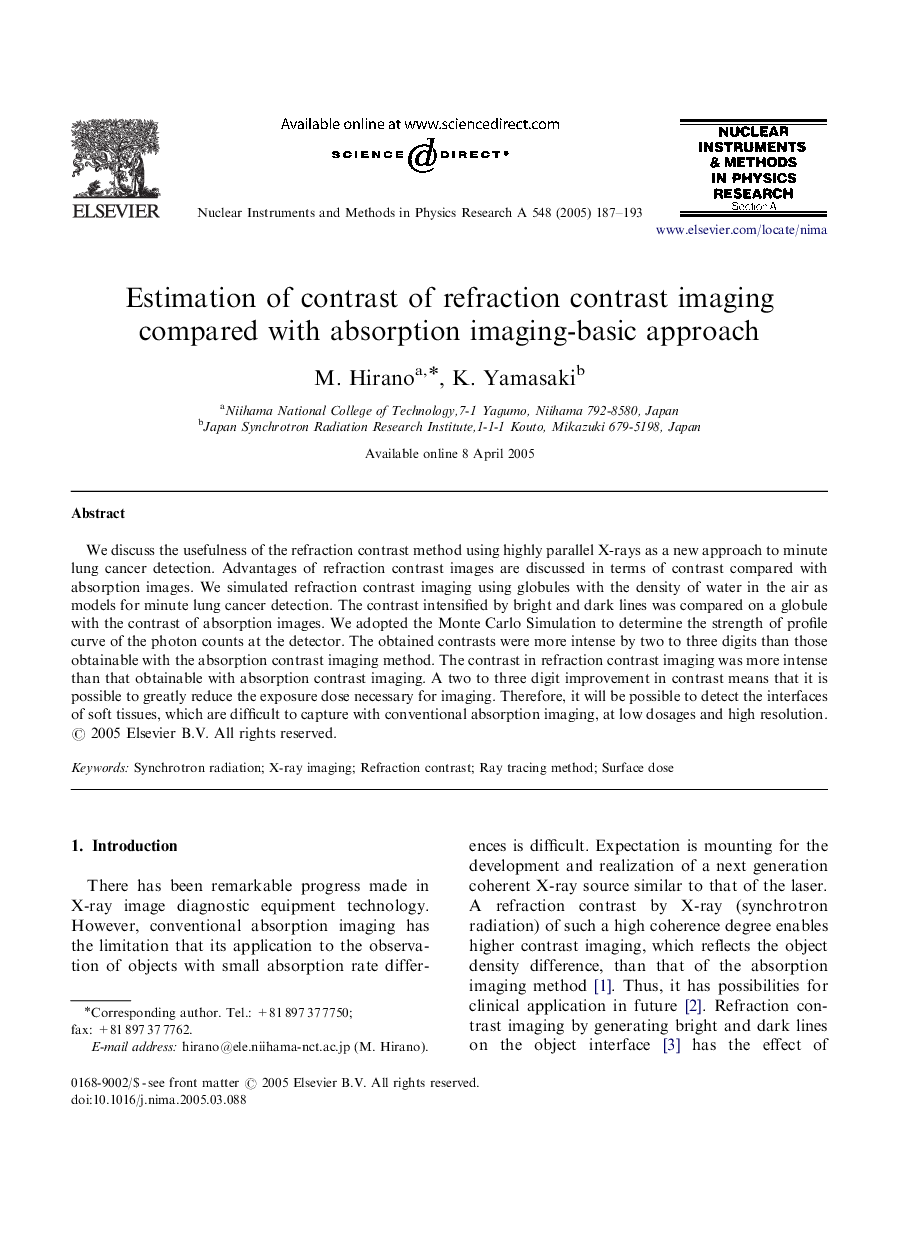| Article ID | Journal | Published Year | Pages | File Type |
|---|---|---|---|---|
| 9845248 | Nuclear Instruments and Methods in Physics Research Section A: Accelerators, Spectrometers, Detectors and Associated Equipment | 2005 | 7 Pages |
Abstract
We discuss the usefulness of the refraction contrast method using highly parallel X-rays as a new approach to minute lung cancer detection. Advantages of refraction contrast images are discussed in terms of contrast compared with absorption images. We simulated refraction contrast imaging using globules with the density of water in the air as models for minute lung cancer detection. The contrast intensified by bright and dark lines was compared on a globule with the contrast of absorption images. We adopted the Monte Carlo Simulation to determine the strength of profile curve of the photon counts at the detector. The obtained contrasts were more intense by two to three digits than those obtainable with the absorption contrast imaging method. The contrast in refraction contrast imaging was more intense than that obtainable with absorption contrast imaging. A two to three digit improvement in contrast means that it is possible to greatly reduce the exposure dose necessary for imaging. Therefore, it will be possible to detect the interfaces of soft tissues, which are difficult to capture with conventional absorption imaging, at low dosages and high resolution.
Related Topics
Physical Sciences and Engineering
Physics and Astronomy
Instrumentation
Authors
M. Hirano, K. Yamasaki,
